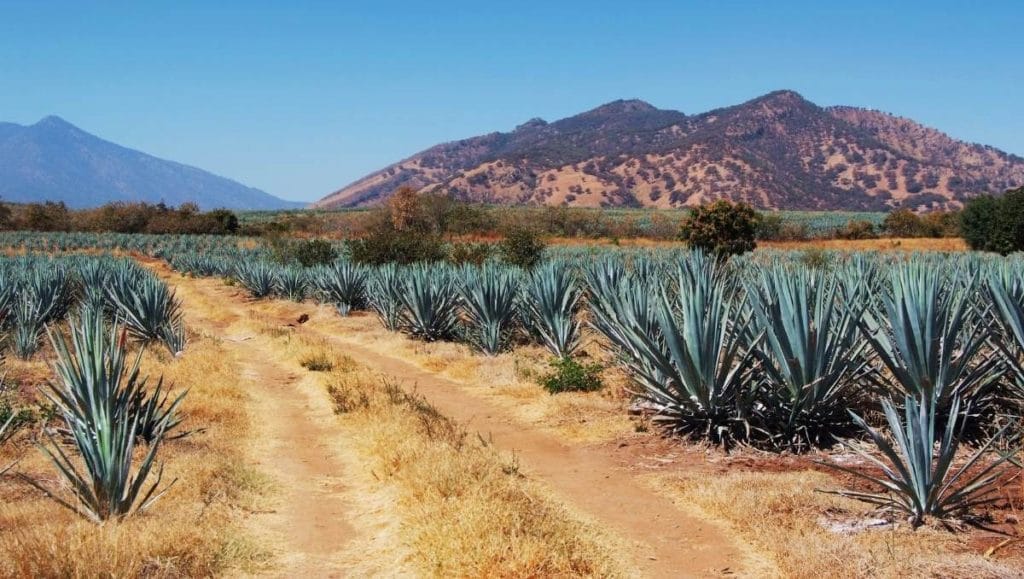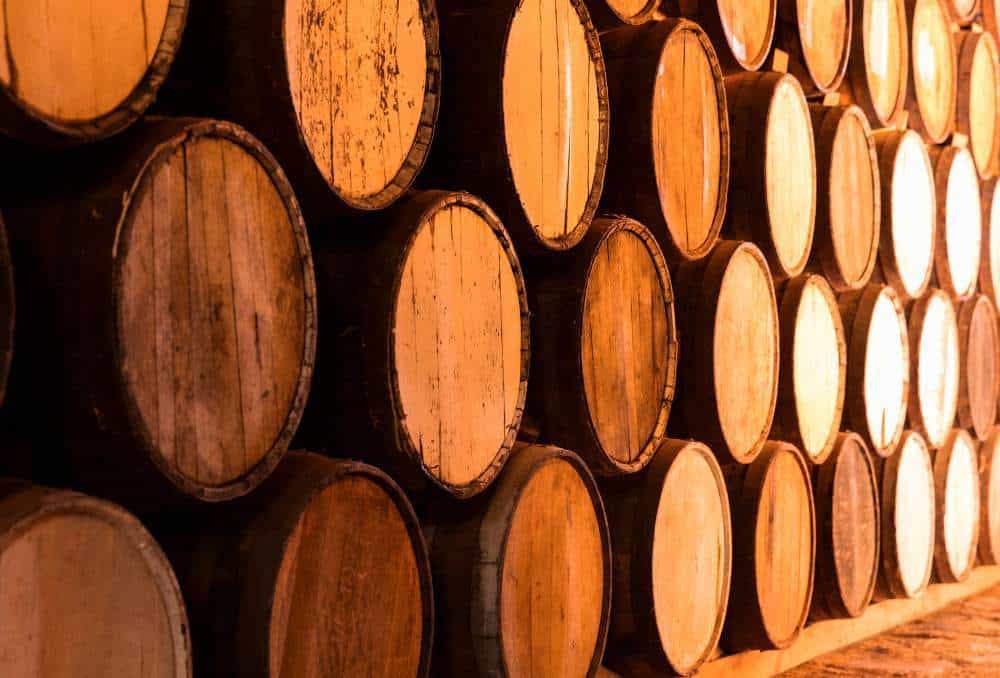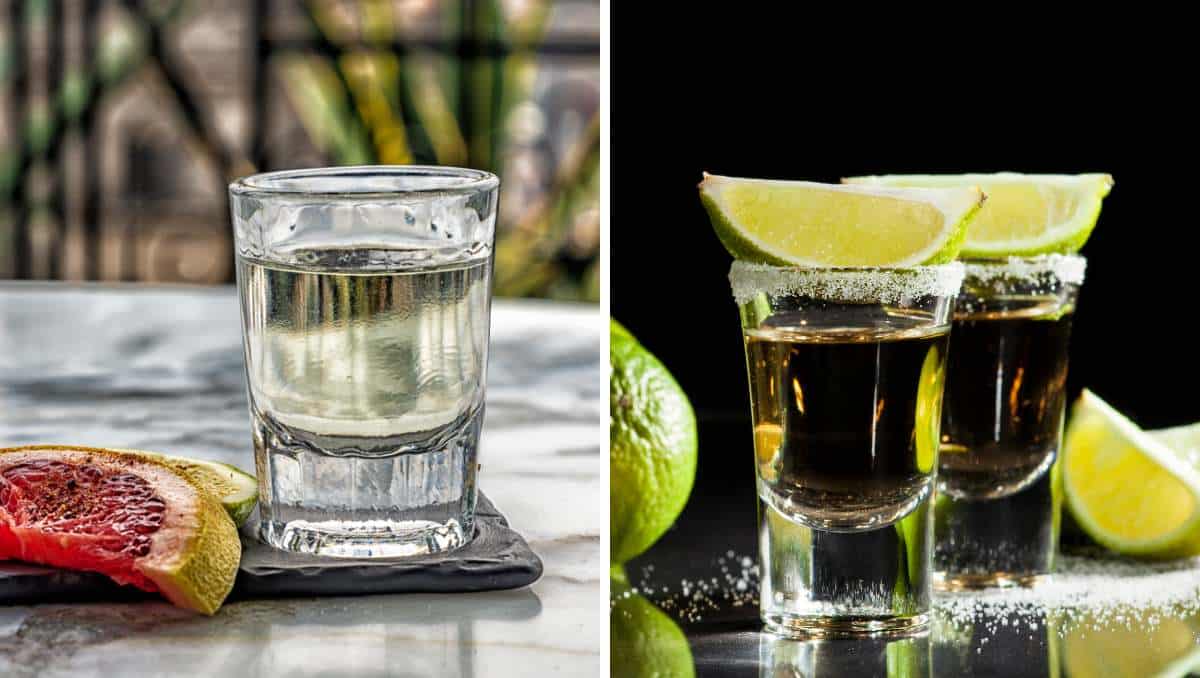If you're into spirits from Mexico, you will know both, Tequila and Mezcal. The two spirits are closely connected but have distinct features that make each unique. All things considered, Tequila is a type of Mezcal, like Bourbon or Scotch are a type of Whiskey. Meaning that Tequila is always a Mezcal, yet Mezcal is not always Tequila.
Read our guide to learn everything about the two liquors and what the difference is between Mezcal and Tequila.
What is Mezcal and What is Tequila?

In short, Mezcal is an umbrella term for various agave spirits made from the hearts (piñas) of different species of agave. Tequila is a distinct kind of Mezcal produced in specific regions of Mexico, mainly in Jalisco. To make Tequila, you can only use one species of agave - the blue Weber agave.
But Mezcal is not just an umbrella term. It also represents a specific type of agave alcohol. This type is smokier than Tequila because the Mezcalero roasts agave piñas in fire pits before fermentation. That is not the case with Tequila, where you cook agave in ovens. But more things make Tequila different from Mezcal.
The agave plants in Mezcal and Tequila
Tequila is exclusively made from the blue agave plant, also called agave tequilana. Mezcal, on the other hand, can be made from more than 30 different types of agave plants like Espadín, Tobalá, and Tepeztate.
It takes years for agave plants to fully mature. Some species require 6-10 years, other varieties take up to 20 years.
Mezcal and Tequila are made in different regions

Tequilas must be distilled in the states of Jalisco, Guanajuato, Michoacán, Nayarit, or Tamaulipas. That is defined in the so-called Denomination of Origin (DO), which indicates possible production areas. Only spirits that comply with these regulations can legally be called, and labeled, a Tequila. Jalisco, where the town of Tequila is located, produces by far the majority of Tequila.
In comparison, Mezcal can be produced in nine major regions such as Durango, Guanajuato, Guerrero, San Luis Potosí, Tamaulipas, Zacatecas, Michoacán, Puebla, and Oaxaca.
How are Mezcal and Tequila made?

Both spirits use the heart of agave plants, the piñas, to get that distinct agave flavor into the spirit. From there, the process of making Mezcal and Tequila is very different.
Tequila is made from the blue Weber agave plant. In the first step, the "Jimador" (the harvester of agave plants) uses a sharp tool called coa to harvest the core and remove the leaves around the agave core, the so-called piña.
In the next step, the distillers steam piñas in large above-ground ovens to cook the aged cores. The cooking initiates a chemical process in the piñas that breaks down complex carbohydrates and turns them into fermentable sugars.
The cooked agave is crushed and milled to release a sweet liquid that is then distilled in copper pots -usually two or three times.
For making Mezcal, the harvesting process is quite similar to making Tequila, with the difference that the Jimador can harvest other agave plants than the agave tequilana. However, in the next step, the Mezcalero roasts the agave piña in underground fire pits lined with hot rocks for several days.
This charring accounts for the smoky flavor Mezcal is famous for. After roasting, the piñas are milled using a tahona (large stone wheel), traditionally pulled by mules.
After distillation, the product rests in wooden barrels or clay pots for fermentation. The resulting agave mash is distilled twice in copper stills.
The difference in aging between Mezcal and Tequila

When the distillation process is completed, Mezcal and Tequila may age in wooden barrels to develop more mature flavors. The aging categories are similar but not exactly the same. Here's how both spirits compare regarding aging:
Mezcal aging
- Joven: A young and fresh Mezcal that is mostly unaged but can age for up to two months. It is either referred to as JovenMezcal or Blanco.
- Reposado: ReposadoMezcal is aged 2 - 12 months and has a light golden color and a more mellow taste.
- Añejo: Aged for 1-3 years, Añejo Mezcal is darker in color and has a more complex taste.
- Extra Añejo: Aged for three years or more, Extra Añejo Mezcals have a well-rounded and complex flavor profile with delicate sweet notes.
For a more detailed explanation, read this article about the different types of Mezcal.
Tequila aging
- Blanco: the unaged expression of Tequila.
- Joven: typically contains unaged Tequila mixed with a bit of aged Tequila
- Reposado: Aged in oak barrels for 2-12 months and has a golden to caramel color.
- Añejo: Aged in oak barrels for at least one year, Añejo Tequila has a mellow taste with sweet vanilla notes.
- Extra Añejo: Rare Tequilas aged for at least three years in oak barrels.
For a more detailed explanation, read this article about the different types of Tequila.
The taste difference between Mezcal and Tequila
Taste is one of the key differences between Mezcal and Tequila, as Mezcal often has a prominent edgy, smoky flavor and subtle sweet and earthy notes. But that's just a tiny part of the differences in the flavor profile.
The taste of Tequila depends on the exact growing region of the blue agave plant and the aging time. Blanco Tequila has a sweet and crisp taste with flavors like spice, pepper, citrus, and a distinct cooked agave note. Reposado Tequila tastes sweeter, more mellow, and has a better balance of flavors. Añejo and Extra Añejo Tequila have a dark color and a distinct balance of oak and agave flavors. They're often sweeter than young Tequila and contain sweet flavors like vanilla and caramel along with wooden oaky notes.
Mezcal, on the other hand, is made from a variety of agave plants. That makes the flavor profile very diverse. Mezcals can have a wide array of flavors ranging from floral, herbal, and citrusy to earthy, mineral, and spicy. You can also find Mezcal bottles with unique flavors like chocolate, chipotle, lychee, and meat. That makes it one of the most diverse of all Mexican spirits.
How to drink Mezcal and Tequila?
Common ways to drink Tequila is in the form of a shot served with salt and lime. Depending on the specific bottle, you can enjoy it neat or on the rocks. However, Tequila pairs so well with lime juice that the best way to drink it is in classic Tequila cocktails like a Margarita, Paloma, or a Tequila Sunrise.
The best way to drink Mezcal is neat at room temperature. In Mexico, a side of worm salt, orange slices, and fried grasshoppers is commonly served along with a glass of Mezcal.
Mezcal vs. Tequila: Summary of The Differences
When people talk about Mezcal, they usually mean a liquor category of its own, not the umbrella term for agave spirits. And in that context, there are many differences between Tequila and Mezcal. Yes, both are agave spirits, but that is where the similarities stop. They use different agave, come from different regions, are distilled differently, and have other aging categories.
Here's an overview of all the differences between Mezcal and Tequila:
- Produced in different regions of Mexico
- Distilled from differing agave plants
- Different process of cooking or roasting the piñas
- Differences in distillation processes
- Different aging processes
- Varying flavour profiles and distinct tastes
- Different ways of drinking
Frequently Asked Questions
Is the worm in Tequila or Mezcal?
Although the insect is sometimes called a Tequila worm, the worm in the bottle is only found in Mezcal bottles. Also, technically, the worm is not a worm but a moth larvae. These larvae are commonly known as maguey worm, as it lives on agave plants.
The legend says that in the 50s, a Mezcalero found a maguey worm in a batch of Mezcal. Thinking the presence of the larva had improved the taste, he placed a maguey worm in each bottle. That was such a huge success that other manufacturers followed soon, and it became a popular marketing strategy.
The right way to drink Mezcal is with a side of Sal de Gusano (worm salt) sprinkled on a slice of orange. Whereas Silver Tequila usually comes with a side of salt and lemon.
Is Mezcal a Tequila?
No, it is the other way round. Every Tequila is a Mezcal, but not every Tequila is a Mezcal. A Tequila is a specific type of Mezcal, like a London Dry Gin is a type of Gin. Tequila can be produced only in restricted regions in Mexico. And also, Tequila can be made only from the Blue Weber Agave (Agave tequilana).
Can you substitute Tequila for Mezcal?
Yes, you can, yet there's a but. The distinct smoky note in Mezcal often shines through in cocktails. When using Tequila instead of Mezcal, you will still get agave flavors, but not the distinct smoky taste of Mezcal. If you keep this in mind, you can certainly use both interchangeably.


Thanks for pointing out the differences between the two. Especially the detailed information on the agave types used for making Mezcal, appreciate it!